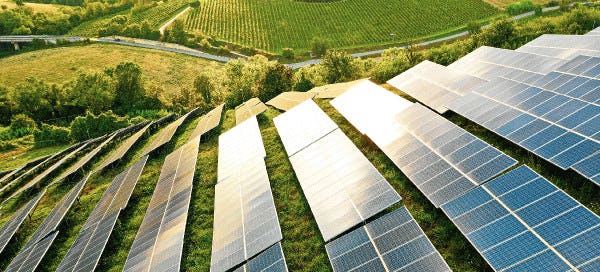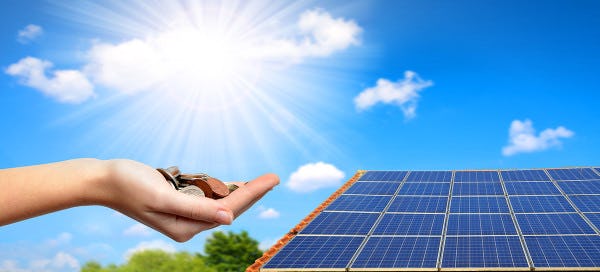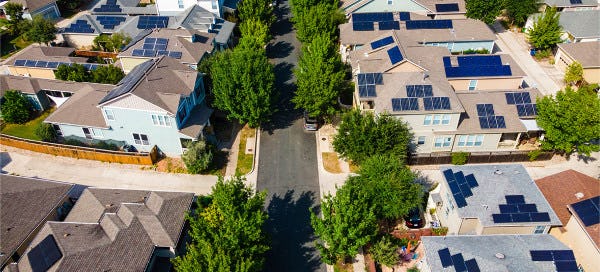As you've likely heard by now, solar panels are an effective way to save money on your monthly electricity bill. They provide an excellent way for homeowners to cut costs and take steps to reach their financial goals.
But first, they must be installed, so what about solar panel costs? Several factors influence the final price, including installation and monthly bills. Learning more about solar panel costs will help you make an informed decision before converting to solar power.
Factors Affecting Solar Panel Costs
Solar panels are priced differently around the country, both in terms of the initial cost and cents per kilowatt-hour they provide. The typical electricity bill in the area, prices, and installation fees can vary substantially from state to state.
It's also important to note that some key factors, like installation labor, are unpredictable. Factors contributing to labor costs include the style and angle of your roof, whether new attic conduits get installed, and various other unique requirements.
A quality solar installation company will provide a free walk-through to gather all necessary information before preparing an accurate quote for you.
Solar Panel Size
The size of a solar panel system will have a significant impact on the cost of installation. Sizes for solar systems are generally measured in kilowatts (kW), with a rating indicating the maximum amount of power the solar panels can produce under ideal conditions.
1,000 watts (W) is equivalent to 1 kilowatt (kW). The kilowatt-hour metric (kWh) describes the number of kilowatts used in one hour. Simply put, kWh is how utility companies measure the electricity generated by your solar panels and used in your home.
How many kWh your home requires and how much money you want to save on your electric bill determine the size of your solar energy system. If your home requires a lot of energy, you'll need a more extensive system to produce enough energy to cover your electric bill. Installing more units means your solar panel cost will be more expensive.
Geographical Location
The location of your home will influence your final solar panel cost in several ways. For example, your home's access to direct sunlight may impact the price. If you live in an area with limited sunlight, your system may need more solar panels to generate enough electricity and meet your needs. More solar panels will increase the final cost.
The 26% federal solar tax credit lowers the cost significantly, but every state and local government provides different incentives for solar panel installations that help offset the price. No two states have the exact same offers, so you must review the incentives in your area.
Manufacturer and Equipment Type
With solar, like with other things, the brand affects the price. Certain solar panel manufacturers' panels are more expensive than others, but that doesn't always imply that they're ahead in quality or performance. Some brands are far less costly than premium companies but have nearly identical features and excellent customer reviews.
The type of solar panels you choose will impact the total price. Homeowners can choose from monocrystalline solar panels or polycrystalline ones. Most solar panels are monocrystalline, but choosing polycrystalline panels may save you money on installation costs.
Solar panel cost is also influenced by the racking method used for rooftop solar panels. Properties in areas with severe weather conditions, like snow and hurricanes, require more sturdy racking systems, thereby raising the installation costs.
Solar Battery Costs
Another factor that influences the final solar panel costs is a solar battery. One battery adds a minimum of $10,000 to your final price, which is a hefty investment.
The actual cost of solar batteries depends on the manufacturer and how many batteries you need. However, solar batteries are covered by the solar tax credits, and your state may provide additional incentives when you purchase a battery.
Solar Panel Maintenance
Although maintenance isn't a factor until after the installation, it's another part of the total solar panel cost. Adequately installed solar energy systems will operate for decades without much maintenance.
However, routine cleaning is essential due to the dirt, leaves, and other debris accumulating on solar cells. You can pay a professional to complete this service or save a few dollars and clean your panels yourself.
Any malfunctions or significant repairs should be covered in your manufacturer's warranty, but it's always a good idea to factor in everything as you determine a final cost.
How Many Solar Panels Will I Need?
Several criteria determine the number of solar panels you'll need, including the size of your property, the amount of daily sunlight it receives, and other considerations.
Your energy requirements will ultimately determine the number of panels you'll need. Other amenities outside your home, such as powering a guest house or heating a pool, may require additional energy. As a result, the number of solar panels you'll need will increase.
Calculating the Solar Panel Cost in Your Area
You can use a solar calculator to determine the costs and savings of installing a solar energy system in your home — try Rhythm's solar energy calculator to help determine the right sized system for you. If you enter your address and the cost of your most recent monthly electric bill, the calculator will determine the electricity rates for your local utility company and how much power you use. From there, you'll find out:
The number of solar panels needed
Total solar panel cost
Potential solar panel savings
Although there are other influencing factors, this gives you an idea of how much it will cost for a solar installation.
To learn more about solar and solar panels visit our other blogs:
Finding the Right Solar Installer
If you've decided solar panels are an ideal investment for your home, the next step is finding solar installers to complete the project. The best way to find the right solar installer is to start with a reputable local solar company. Search for an installer that meets the following requirements:
Established as a solar business for over five years
Uses their own installation team
Employs between 15 and 20 employees
Has at least one NABCEP-certified installer
These factors are important but pay attention to their pricing too. A below-average price may indicate low-quality equipment or inadequate installation services. Prices above average might mean you're paying premium prices with no extra benefits. A quality solar installer charges an average price and uses high-quality materials on every project.
Paying for Your Solar Investment
Many homeowners believe that the cost of solar panels is out of their budget. But with multiple options to pay for your system, it's almost impossible not to find a solution that works for you. There are three main ways to pay for your solar panels: cash, a solar loan, or a solar lease.
Paying with Cash
Paying for your solar energy system with cash is the best way to maximize your savings. You outright own it and don't have to make it through the payback period before you begin seeing the savings add up. Because you're replacing your traditional electricity bill, you're essentially pre-paying for 25 years worth of electricity!
You'll be protected from future electricity rate hikes, and you'll be eligible for all of the financial benefits and rebates that come with going solar. What's more, if you decide to sell your home, you earn the full value from your panels in the resale.
Paying with Solar Loans
The second method to pay for your solar system is to qualify for a solar loan. Like those using cash, you'll still own the system. However, you make your purchase with no money down, sometimes at a lower price than your current electricity bill. Solar loans make your monthly electricity bill more affordable.
With a solar loan, you still qualify to receive any tax breaks or other incentives for the system. Keep in mind that a loan will require paying interest over the contract's life, potentially increasing your final solar panel cost.
Paying with a Solar Lease/PPA
Solar leases and power purchase agreements (PPAs) played a critical part in the early growth of the solar industry, though their popularity has waned in recent years.
These solar leases and PPAs are both forms of third-party ownership (TPO), meaning a third-party owner installs solar panels on your property and then sells the electricity generated by the solar panels at a predetermined rate. Leases and PPAs vary slightly, but they're similar enough that it's easy to classify them together.
With a lease/PPA, you typically lock in a predetermined rate for electricity for the next 25 years, which is usually 10 to 30% lower than your current rate. Historically, leases and PPAs would have an increasing value, which would mean that you would pay more for your solar each year than the previous year.
But recently, leases/PPAs get locked in at a special rate for the duration of the contract. Furthermore, with a lease/PPA, the third-party owner is responsible for monitoring the system and handling any maintenance, ensuring that your solar panel system is continually being looked after.
Because you do not own the solar panel system in a lease/PPA arrangement, you will not be eligible for any financial incentives or rebates related to solar — instead, the firm that owns the system will.
Furthermore, homes with solar typically sell for three to four percent more money than comparable properties without solar. Unfortunately, this isn't always the case with a lease/PPA because you aren't really the solar power system's owner.
Are Solar Panels Worth the Investment?
Thanks to different solar subsidies, solar panel costs are lower than ever. These prices and the outstanding return on investment make them an even more cost-effective option for most homeowners.
They not only slash your energy bills but they allow you to supply your home with renewable energy, reducing your carbon footprint and your reliance on your local utility company.
Even though their price tag is intimidating, tax credits and payment options help reduce costs. Depending on the state's net metering rules and the home's energy consumption, a typical home solar panel system can save between $1,000 and $1,600 per year on electricity bills.
Actual solar savings will vary depending on system size, electricity costs, home energy usage, and net metering laws in place, but the average solar homeowner can expect a payback period of 8 to 11 years. After that, they'll have at least another 15 years of completely free solar energy!
Solar Energy in Texas
Texas' residential electric bills are about 20% higher than the national average. This disparity is one of the many reasons Texans choose an energy company like Rhythm Energy to reduce electricity bills and save money with the renewable energy your home already produces.
With our solar buyback plan, going solar becomes more affordable than ever before. Each month, we'll pay you for any of the unused energy your home produces. It's sent back to the grid, and renewable energy gets shared throughout the community.
Are you saving for your residential solar panels but interested in reducing your carbon footprint? Call us today to learn how you can participate in our renewable energy plans.




